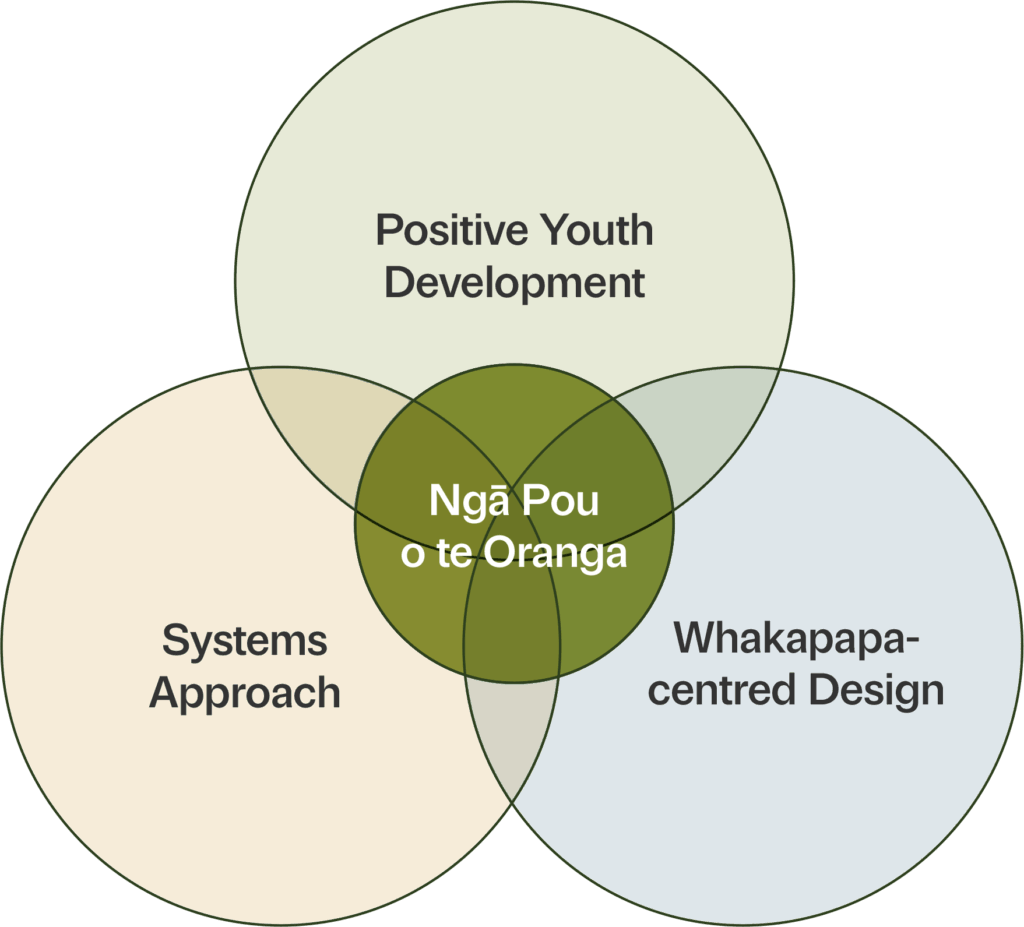How We Work
Ngā Pou o te Oranga – our Practice Framework
At Reconnect we believe the approach to our work needs to be thoughtful, consistent, and always with the needs of the young person and whānau in mind.
We love innovation and agility and reckon these are best achieved when staff have guiding principles to help make decisions.
In Te Ao Kohatu – a literature review of indigenous theoretical and practice frameworks – a practice framework is described as “…a tool for practitioners, a conceptual map that brings together, ‘a theoretically informed intervention logic and a set of triggers to support best practice’ (Connelly, 2007).” (Dobbs, 2015).
Reconnect employs a number of models and approaches to its therapeutic, care and mentoring work. An advantage of formalising the framework is captured in the quote above – it supports best practice. It also enables us to create sustainable structures around an agreed approach to our work. Case decision-making, recruitment, induction, supervision, training, performance appraisal, how to work with stakeholders and colleague agencies can all be organised around agreed approaches and principles.
In 2020 we held a series of workshops to explore and collate the theories/ models we already work with and those we aspire to employ in work with clients and its management/leadership. Since then, we have refined our approaches and developed our own.
Key frontline work theories/models
Key management/leadership theories/models
Through discussion and reflection, three overarching approaches were identified:
These approaches have considerable thinking, research and evidence sitting behind them. The research is international and – most importantly – within New Zealand. All models/ theories we employ fit under one or more of these approaches.
